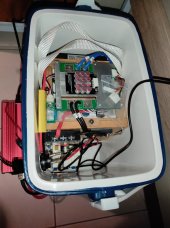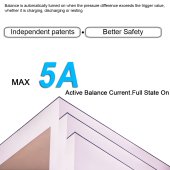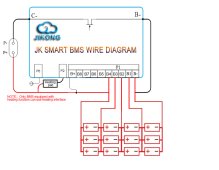1.MOSFET is a chip used to protect BMS with 20 on it. This allows the BMS to charge and discharge 200A continuously or up to two minutes at 350A. If a MOSFET is destroyed, the overcurrent capacity on behalf of it will be reduced. In this case, it is recommended that the customer replace the new MOSFET.
2.Doesn't Support parallel Connection
(If your batteries are not consistent,
It is not recommended to link two or more BMS battery packs
Parallel Link to a Load)
Due to the discharging rate and battery consistency problems, which can cause different voltage to the battery pack without access, it is easy to cause the voltage of the high voltage battery pack to be reversed back to the low voltage battery pack. Therefore, we do not recommend parallel operation when the customer's battery consistency is insufficient.





